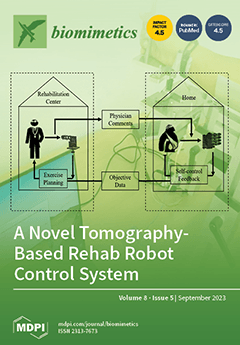This study focuses on developing and evaluating two novel enantioselective biomimetic models for the active centers of oxidases (ascorbate oxidase and catalase). These models aim to serve as alternatives to enzymes, which often have limited action and a delicate nature. For the ascorbate
[...] Read more.
This study focuses on developing and evaluating two novel enantioselective biomimetic models for the active centers of oxidases (ascorbate oxidase and catalase). These models aim to serve as alternatives to enzymes, which often have limited action and a delicate nature. For the ascorbate oxidase (AO) model (compound
1), two enantiomers, S,S(+)cpse and R,R(−)cpse, were combined in a crystalline structure, resulting in a racemic compound. The analysis of their magnetic properties and electrochemical behavior revealed electronic transfer between six metal centers. Compound
1 effectively catalyzed the oxidation of ascorbic to dehydroascorbic acid, showing a 45.5% yield for the racemic form. This was notably higher than the enantiopure compounds synthesized previously and tested in the current report, which exhibited yields of 32% and 28% for the S,S(+)cpse and R,R(-)cpse enantiomers, respectively. This outcome highlights the influence of electronic interactions between metal ions in the racemic compound compared to pure enantiomers. On the other hand, for the catalase model (compound
2), both the compound and its enantiomer displayed polymeric properties and dimeric behavior in the solid and solution states, respectively. Compound
2 proved to be effective in catalyzing the oxidation of hydrogen peroxide to oxygen with a yield of 64.7%. In contrast, its enantiomer (with R,R(-)cpse) achieved only a 27% yield. This further validates the functional nature of the prepared biomimetic models for oxidases. This research underscores the importance of understanding and designing biomimetic models of metalloenzyme active centers for both biological and industrial applications. These models show promising potential as viable alternatives to natural enzymes in various processes.
Full article






